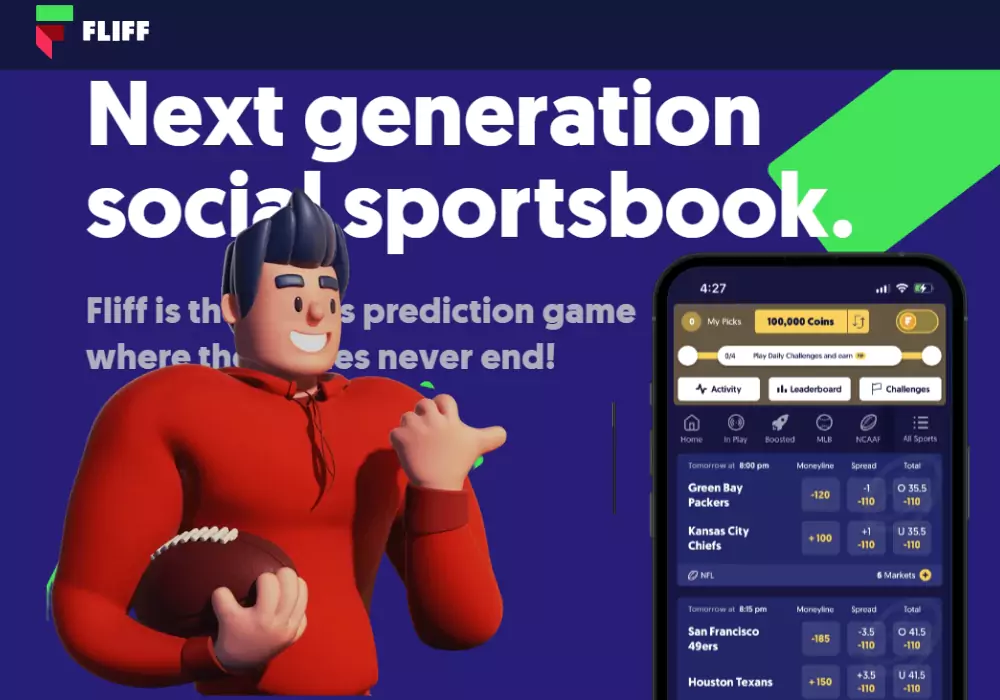Earning passive income is a dream for many, but finding a simple, low-risk opportunity can be challenging. If you’re looking for a creative yet lucrative way to earn $1000 or more each month, digital planners might be your answer.
Digital planners have surged in popularity, offering organization and productivity tools in a sustainable, customizable format. For entrepreneurs, they represent a low-cost, high-demand product with the potential to generate consistent passive income.
In this guide, you’ll discover why digital planners are a perfect passive income stream, how to create and sell them effectively, and the strategies to scale your earnings. Whether you’re a beginner or an experienced seller, this roadmap will help you tap into a growing market and turn your creativity into a reliable revenue stream.
Ready to dive in? Let’s explore how to transform your ideas into profit with digital planners.
What Are Digital Planners?
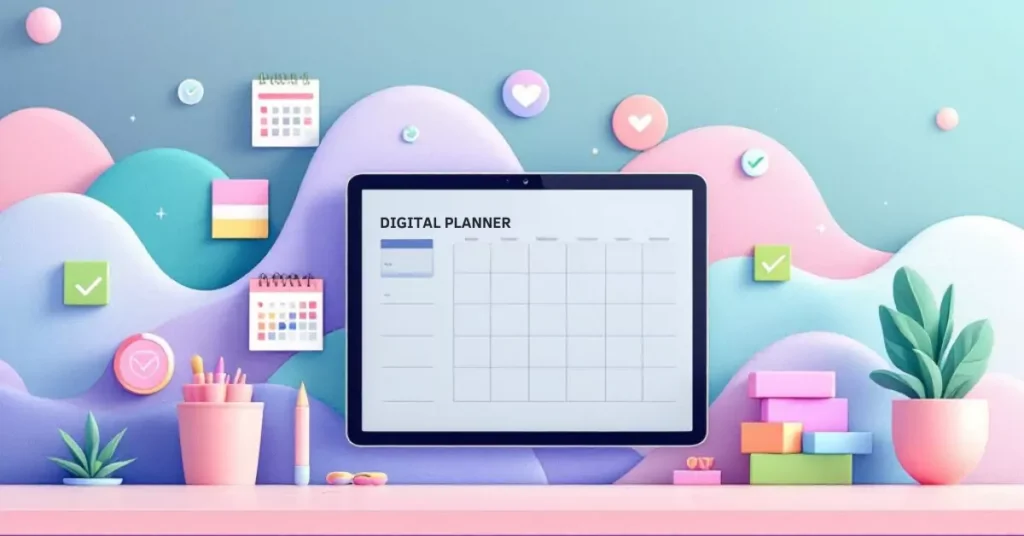
Digital planners are essentially virtual versions of traditional paper planners, designed for use on devices like tablets, smartphones, and laptops. They cater to people looking for a convenient, eco-friendly way to organize their schedules, set goals, and stay productive. Think of them as interactive PDFs or apps that allow you to jot down notes, track habits, plan projects, and even doodle—except everything is neatly stored on your device.
What makes digital planners unique is their flexibility. Users can customize layouts, add pages, and integrate tools like hyperlinks for quick navigation. Plus, they work seamlessly with apps like GoodNotes, Notability, or OneNote.
Why are they trending? For one, they save paper—always a plus for eco-conscious consumers. Second, the rise of remote work and digital tools has people seeking solutions that sync with their devices. So yeah, they’re not just planners; they’re a lifestyle tool.
For creators, the digital planner market offers serious potential. Whether you’re a graphic designer, entrepreneur, or hobbyist, the barriers to entry are low. You don’t need a huge budget or advanced skills—just creativity, a good eye for design, and an understanding of what people want.
Why Digital Planners Are a Perfect Passive Income Opportunity

Here’s the deal: creating digital planners requires upfront work, but once they’re done, they can generate income repeatedly without much ongoing effort. That’s the essence of passive income, right?
Digital planners hit a sweet spot between affordability and scalability. A single product can sell hundreds—if not thousands—of times on platforms like Etsy, Creative Market, or your own website. With prices ranging from $5 to $30 per planner, the math speaks for itself.
Another reason they’re great for passive income is their evergreen appeal. People always need planners—whether for work, fitness, school, or personal growth. And because they’re digital, there’s no inventory to manage, no shipping headaches, and minimal overhead costs.
The demand is there. In 2025, productivity-related products, including planners, saw a surge in searches, particularly on platforms like Pinterest and Etsy. That means more eyeballs on your product without having to chase after customers.
Finally, digital planners are super versatile. You can niche down—think planners for students, entrepreneurs, or fitness enthusiasts—or create general-purpose options. Either way, there’s room for everyone to succeed in this growing market.
How to Create Digital Planners That Sell
Creating a digital planner isn’t just about slapping together pretty pages and calling it a day. If you want to stand out and make sales, you’ll need to combine creativity with strategy. Here’s how to nail it.
Understanding Your Target Audience

Start with the basics: Who’s buying your planner? Is it busy moms? College students? Small business owners? Each group has unique needs. A student might want pages for class schedules and assignment tracking, while a mom could use meal planners and budget trackers.
Pro tip: Hang out where your audience does—Facebook groups, Reddit threads, or even TikTok. Pay attention to what they’re talking about. Are they struggling with time management? Do they love minimalistic designs? Use those insights to guide your creation process.
Essential Tools and Platforms for Digital Planner Creation
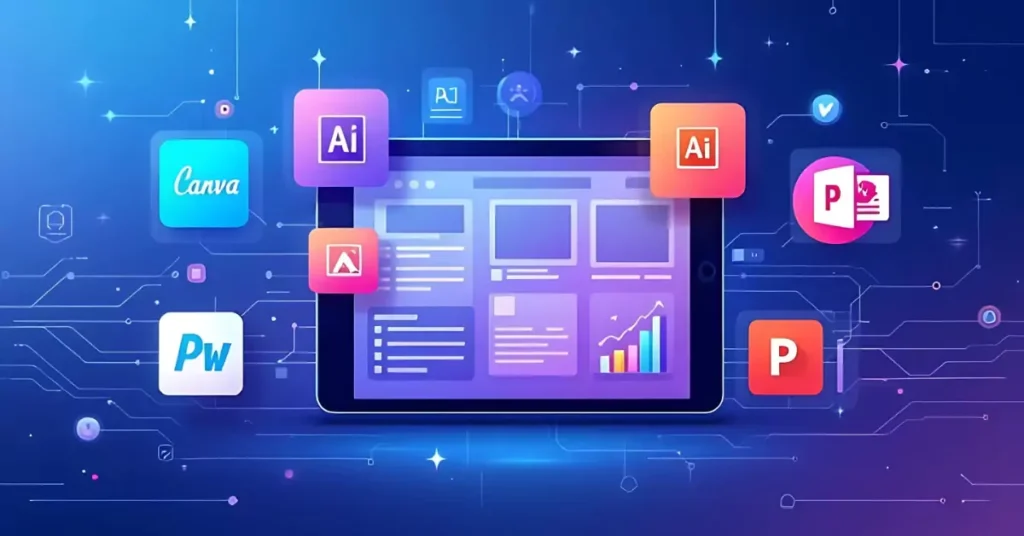
You don’t need to be a design guru to create digital planners, but the right tools will make your life a lot easier. Here are some essentials:
- Design Software: Canva (user-friendly), Adobe InDesign (professional-grade), or Affinity Publisher.
- Tablet & Stylus (Optional): Tools like the iPad Pro and Apple Pencil are great for creating custom elements.
- Digital Note Apps: GoodNotes and Notability are popular platforms where your planner will likely be used.
Export your planner as a high-quality PDF with clickable hyperlinks. That’s a must if you want to wow your customers.
Designing a Digital Planner: Key Elements to Include
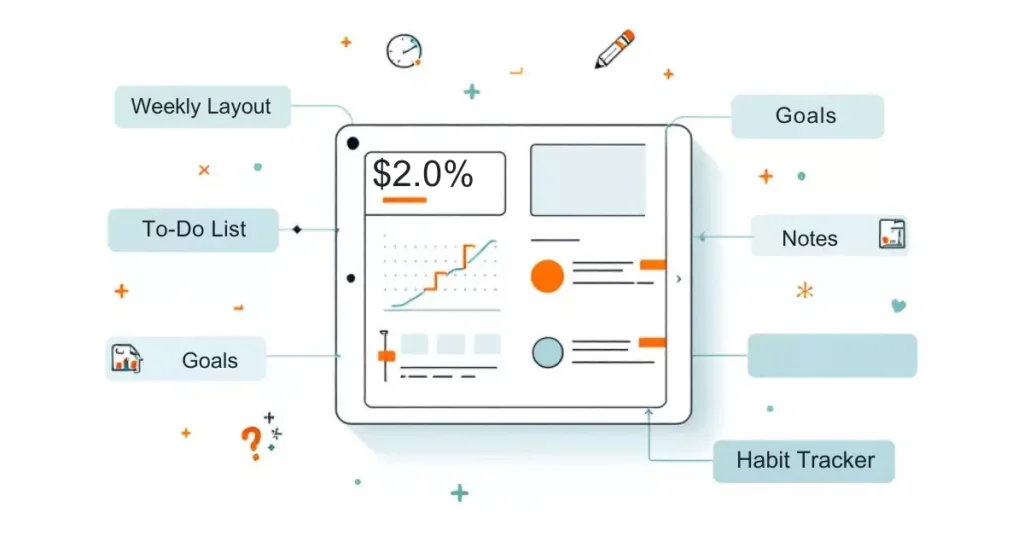
Look, people are buying your planner to solve a problem. Make sure it delivers. Include these essentials:
- Monthly, Weekly, and Daily Layouts: Offer variety so users can plan at different levels of detail.
- Goal-Setting Sections: People love planners that help them achieve something tangible.
- Hyperlinked Tabs: These make navigation a breeze and add a professional touch.
- Customizable Pages: Consider undated pages or templates users can personalize.
- Extras That Add Value: Budget trackers, habit trackers, gratitude journals—these are fan favorites.
Keep the design clean and intuitive. Overcrowding your pages with unnecessary graphics might look cool, but it’s usability that wins customers over.
Where to Sell Digital Planners for Maximum Profit

Selling digital planners is all about finding the right platform to reach your audience. Whether you go for established marketplaces or set up your own store, the goal is to maximize visibility and profits. Let’s break it down.
Best Online Marketplaces
If you’re starting out, marketplaces are a fantastic option because they bring traffic to you. Here are some top picks:
- Etsy: Known for its handcrafted and digital goods, Etsy is a goldmine for digital planners. It has a massive audience, and people actively search for planners here. The downside? Transaction fees and competition, but with good SEO, you can stand out.
- Creative Market: A more design-focused platform where buyers look for high-quality, unique products. If your planner has an artistic edge, this is the place to be.
- Gumroad: Great for creators who want a simple way to sell directly to their audience. It’s easy to use and takes care of the logistics, like downloads.
- Amazon KDP: While more geared toward print-on-demand planners, it’s worth considering if you want to expand into hybrid digital-physical products.
Pro tip: Start with one or two platforms. Focus on mastering the SEO and marketing strategies specific to those sites before branching out.
Building Your Own E-commerce Store
If you’re serious about scaling, having your own store gives you full control. Platforms like Shopify, WooCommerce, or even a simple Squarespace site work well. Yes, it takes more effort to set up and drive traffic, but the payoff is worth it.
The best part? You keep more of your profits, and you can build your email list—a crucial asset for long-term success. Add features like bundled planner packs or seasonal designs to encourage repeat customers.
Here’s a bonus: Owning your store makes it easier to upsell related products, like digital stickers or productivity templates. Think of it as creating an ecosystem where your planners are just the start.
Marketing Strategies to Boost Your Sales
Creating an amazing planner is only half the battle. To hit consistent sales, you’ll need solid marketing. The good news? You don’t have to be a pro. Some of the best strategies are simple, budget-friendly, and effective.
Using Social Media to Promote Your Digital Planners
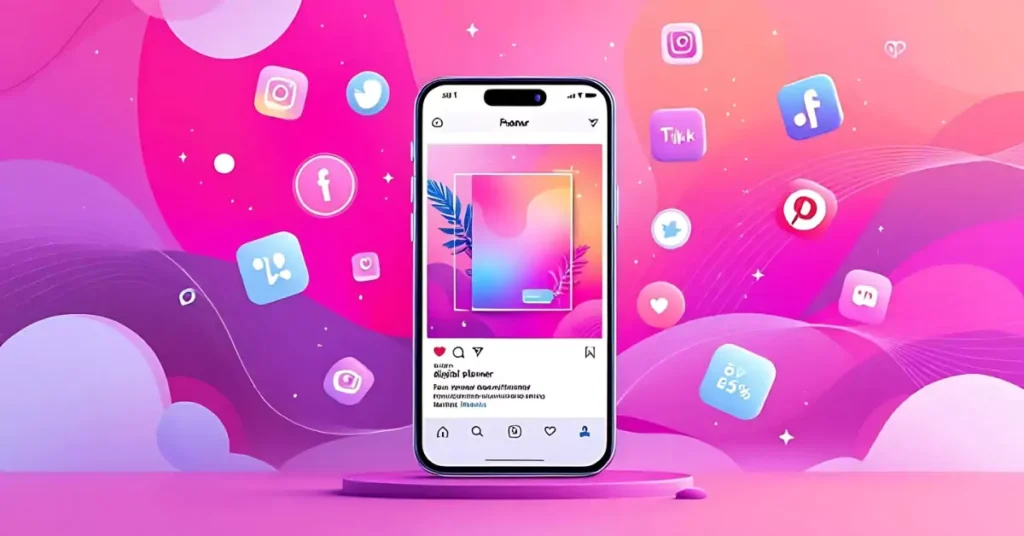
Social media is where your audience hangs out, so meet them there. Platforms like Instagram, Pinterest, and TikTok are especially powerful for showcasing visual products like digital planners.
- Instagram: Post carousel images showing planner features. Use Reels for quick tutorials like “How I Plan My Week with This Digital Planner.” Don’t forget hashtags like #DigitalPlanner or #PlannerCommunity.
- Pinterest: A must-have for this niche. People actively search for productivity tools here. Create eye-catching pins with keyword-rich titles like “Minimalist Digital Planner for 2025.”
- TikTok: Short, engaging videos work wonders. Try before-and-after “planning” setups or quick tours of your planner’s features.
Consistency matters more than perfection. Show up, interact with comments, and let your enthusiasm shine through.
Leveraging Email Marketing for Passive Income Growth
An email list is your secret weapon. Why? It’s a direct line to people who’ve already shown interest in your work.
Start with a freebie: Offer a mini digital planner or a printable page in exchange for their email address. Then, nurture your list by sending value-packed emails—think productivity tips, exclusive discounts, or sneak peeks of new designs.
Platforms like Mailchimp or ConvertKit make it easy to automate the process. Send a series of onboarding emails, and when you’re ready to promote, hit them with a well-timed offer. Done right, email marketing can drive repeat sales without being pushy.
Partnering With Influencers and Affiliates
Look, you don’t need mega-influencers to sell planners. Micro-influencers with 5k-50k followers often have more engaged audiences. Reach out to creators in the productivity, lifestyle, or business niches.
Offer them free planners or set up an affiliate program. This way, they earn a commission for every sale they generate. It’s a win-win: you get more sales, and they get rewarded for their efforts.
Even better? Influencers can create authentic content showing how they use your planner, giving you credibility with their audience.
Common Mistakes to Avoid When Selling Digital Planners
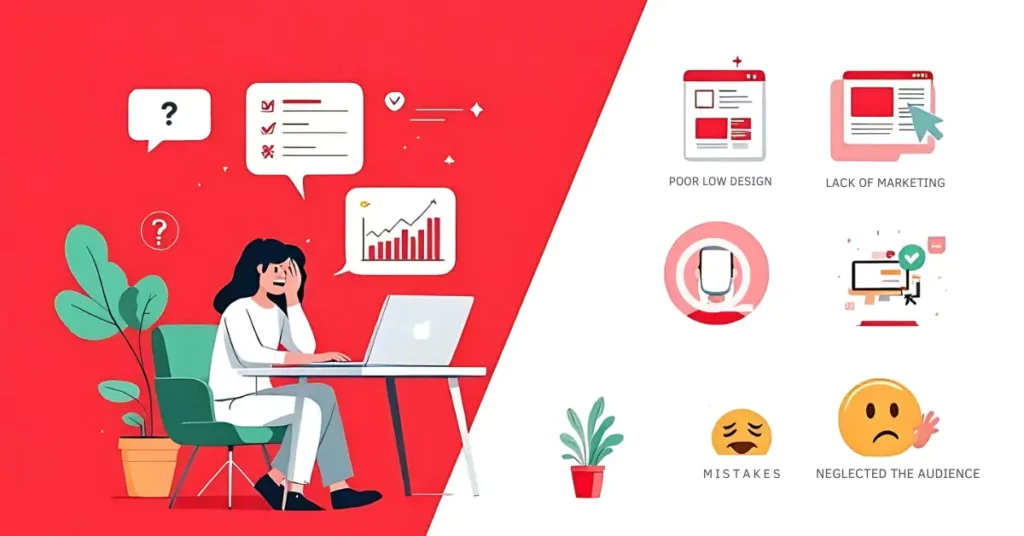
Even the most creative and well-designed planners can fail to sell if you’re making critical mistakes. Let’s save you the frustration by addressing some common pitfalls.
1. Neglecting Market Research: One size doesn’t fit all. A generic planner won’t appeal to anyone in particular. Skipping market research means you’re guessing instead of knowing what your audience needs. Spend time understanding trends and your target niche.
2. Overcomplicating Your Design: Look, a digital planner isn’t an art gallery. Overloading it with too many colors, fonts, or busy layouts can overwhelm users. Focus on clarity and usability. Test your designs before launching.
3. Ignoring SEO on Marketplaces: If you’re selling on Etsy or Creative Market, not optimizing your titles, tags, and descriptions is a huge mistake. Your planner could be stunning, but if it’s not discoverable, it won’t sell. Use relevant keywords like “minimalist digital planner” or “2025 productivity planner.”
4. Pricing Too Low (or Too High): Pricing too low might make you seem unprofessional, while pricing too high could scare off potential buyers. Research your competitors. If most planners in your niche sell for $15, stick close to that range unless you’re offering something truly premium.
5. Skipping Quality Assurance: You’d be surprised how often sellers forget to check for broken hyperlinks or formatting issues. Don’t let a small mistake ruin your reputation. Test your planner on multiple devices and apps to ensure it works perfectly.
Mistakes happen, but avoiding these can make a big difference in your success. The goal is to learn as you go and improve with each launch.
FAQs About Earning Passive Income With Digital Planners
Q: How much can I realistically earn from selling digital planners?
It depends on your effort and strategy. Many sellers report earning $500-$2,000 per month, while top creators earn upwards of $10,000 monthly. Starting with $1,000/month as a goal is achievable with a quality product and smart marketing.
Q: Do I need to be a designer to create digital planners?
Not at all! Tools like Canva make it easy for beginners to create beautiful planners. While design skills help, understanding your audience’s needs matters more.
Q: What’s the best platform to sell digital planners?
It depends on your strategy. For quick exposure, marketplaces like Etsy are great. For long-term growth, consider building your own e-commerce store. Many successful sellers use a mix of both.
Q: How do I handle copyright issues with digital planners?
Use only licensed fonts, graphics, and templates. Avoid copying designs from competitors—it’s not worth the risk. If you’re outsourcing designs, ensure the creators provide proper commercial use rights.
Q: Is it really passive income?
Mostly, yes. Once your planners are created and listed, they can sell repeatedly without additional effort. That said, you’ll need to spend time on marketing and occasionally refreshing your listings.
Still got questions? Dive in and learn as you go—you’ll figure things out along the way.
Conclusion: Start Your Digital Planner Business Today

Here’s the bottom line: Selling digital planners is a fantastic way to earn passive income while flexing your creative muscles. It’s low-cost, scalable, and fits into almost any niche, making it a great option for side hustlers or full-time entrepreneurs.
You’ve seen how to research your audience, design planners that sell, and market effectively. Sure, there’s a learning curve, but once you get the hang of it, the potential is incredible. Imagine waking up to find your planner sold overnight or seeing consistent monthly income from a product you made months ago.
So, what’s stopping you? Start small. Create your first planner, test the waters on a marketplace, and build from there. The digital planner market is growing, and there’s room for new creators to shine.
Take the leap—you’ll thank yourself later when you see those sales rolling in. Your passive income journey starts now.
About The Author
Hi, I'm Yumi Reang, founder of TheMoneyBudget, a personal blog dedicated to helping beginners master their money. Having grown up with limited means and overcome my own financial struggles, I'm now passionate about sharing what I've learned to empower others to achieve financial freedom and build a fulfilling life. You'll find practical tips, guides, and strategies on earning money, saving money, and budgeting on my blog.



